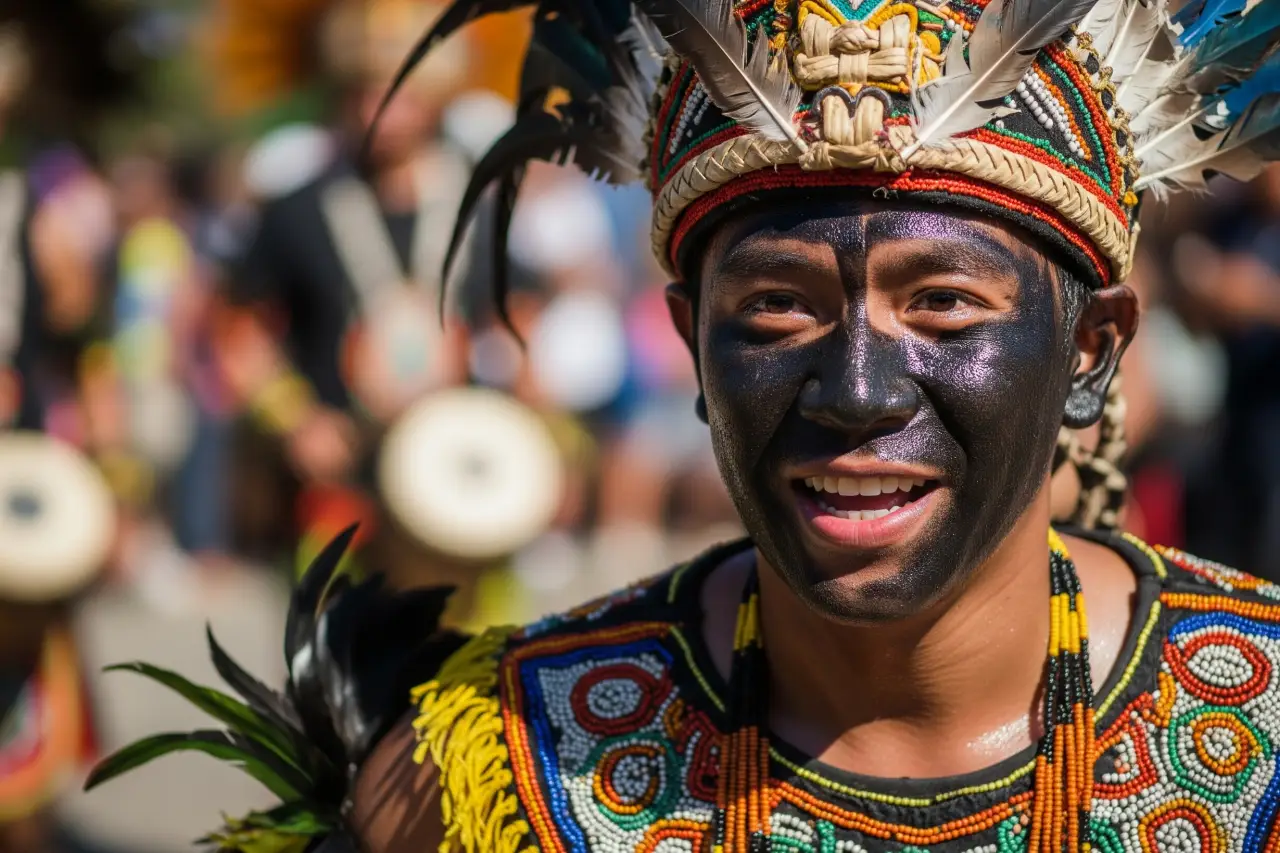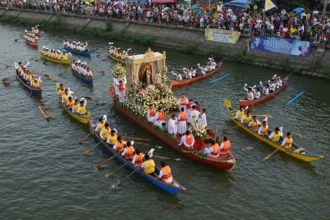🌟 Why Ati-Atihan is the Mother of All Festivals
Long before Cebu’s Sinulog drew global headlines or Iloilo’s Dinagyang dazzled with its choreography, there was Ati-Atihan — the original, often called the “Mother of All Philippine Festivals.” Held every January in Kalibo, Aklan, Ati-Atihan is more than a fiesta: it’s history, devotion, and unfiltered street culture rolled into one.
- 🌟 Why Ati-Atihan is the Mother of All Festivals
- 📜 A Brief History
- 🗓 When and Where
- 🎭 What to Expect at Ati-Atihan
- 🛠 Survival Tips for First-Timers
- 🍴 Where to Eat
- 🛏 Where to Stay
- 🚗 How to Get There
- 💸 Sample Budget for Ati-Atihan
- 📱 Useful Apps & Travel Tips
- 📚 Frequently Asked Questions
- ❤️ Experiencing Ati-Atihan Like a Local
The name Ati-Atihan literally means “to be like the Ati” — the indigenous people of Panay Island. During the celebration, locals and visitors smear their faces with soot or black paint to honor the Atis, then don colorful headdresses and costumes. The streets erupt with the hypnotic beat of drums, chants, and dancing that doesn’t just happen on stage — it happens everywhere, with everyone.
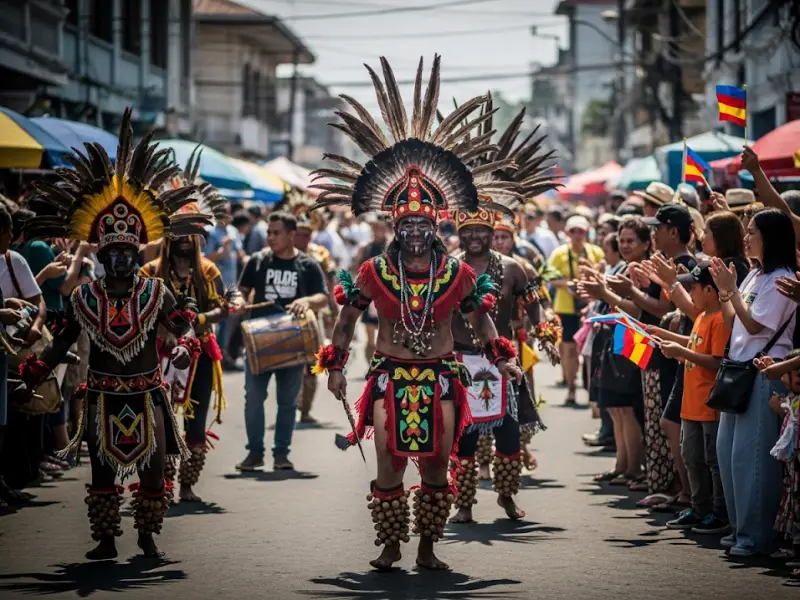
At its heart, Ati-Atihan is a festival for the Santo Niño (Child Jesus). Processions weave through the town with religious icons, while at the same time, the crowd dances in wild abandon to tribal rhythms. It’s devotion fused with revelry, sacred and festive in the same breath.
What sets Ati-Atihan apart is its raw, tribal authenticity. Unlike the larger, commercialized fiestas that came later, Ati-Atihan still feels close to its roots: earthy, inclusive, and unpolished in the best way. Locals call it a fiesta na walang gatecrashers — a street party where literally everyone is welcome.
📜 A Brief History
The Ati-Atihan Festival has roots deeper than most Philippine fiestas — going back almost 800 years.
🌱 Indigenous Beginnings
According to local legend, in the 13th century, Malay settlers from Borneo arrived on the island of Panay. They traded gifts of food, jewelry, and cloth with the indigenous Ati people in exchange for land. To show goodwill, the settlers painted their faces with soot to look like the Atis and joined them in dancing. This symbolic gesture of unity gave birth to what we now know as Ati-Atihan — literally, “to be like the Ati.”
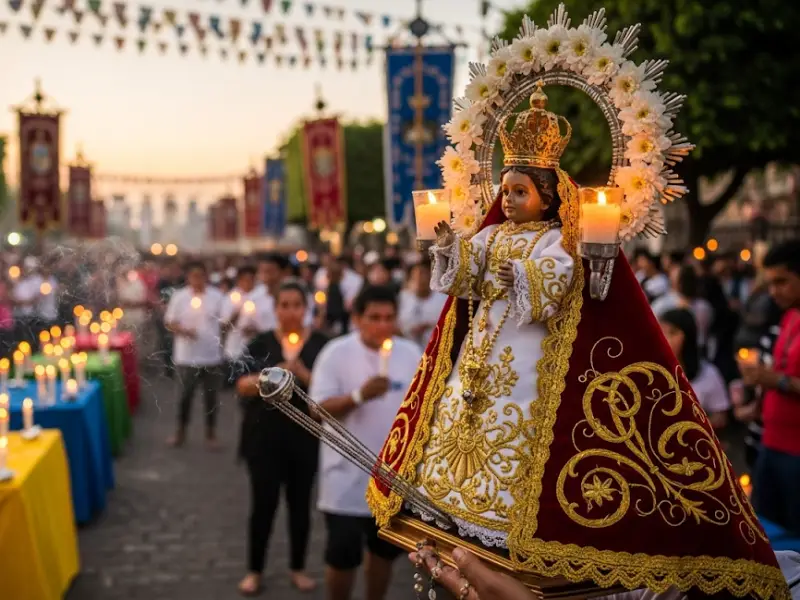
✝️ Religious Transformation
When the Spaniards arrived in the 16th century, they saw how powerful the celebration was and wove it into the spread of Christianity. The festival was then linked to the Santo Niño (Child Jesus), adding Catholic processions and prayers alongside the tribal dancing. Since then, Ati-Atihan has become a fusion of two worlds: indigenous ritual and Christian devotion.
🎭 The Modern Festival
Today, Ati-Atihan is a vibrant mix of both traditions. On one side, you’ll find solemn novena masses, religious processions, and devotees chanting “Viva kay Señor Santo Niño!” On the other, you’ll see throngs of revelers with painted faces, feathered headdresses, and body paint, dancing for hours to the relentless drumbeat.
Unlike more polished festivals like Sinulog or Dinagyang, Ati-Atihan has kept its raw, tribal vibe. It’s messy, sweaty, and immersive — closer to the original spirit of celebration that started centuries ago.
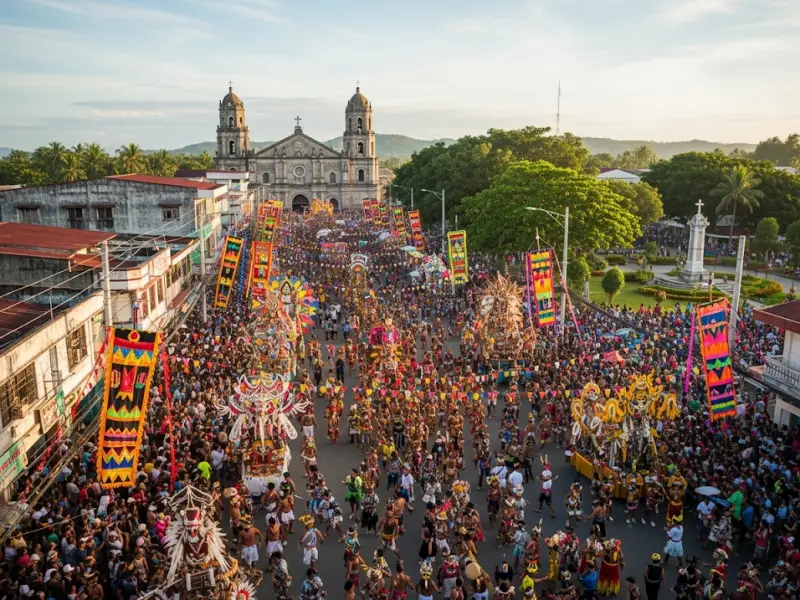
🗓 When and Where
The Ati-Atihan Festival is held every third week of January, with the grand climax falling on the third Sunday. While the highlight is that final weekend, the entire town of Kalibo comes alive days earlier with novenas, parades, and nightly events.
📍 Location
The heart of the action is in Kalibo, Aklan, the provincial capital best known as the gateway to Boracay. But during Ati-Atihan, Kalibo transforms into something much more: a giant open-air stage. The main festivities center around Pastrana Park and Magsaysay Park, where processions, drumbeats, and street dancing spill into every corner of downtown.
⏰ Duration
Ati-Atihan is technically a week-long celebration, with cultural shows, contests, and nightly street parties building up the momentum. But the final weekend is when the energy peaks — streets overflowing with dancers, music echoing from every block, and the devotion to the Santo Niño at its strongest.
✈️ Plan Ahead
Kalibo may not be as large as Cebu or Iloilo, so accommodations and flights get snapped up months in advance. If you’re planning to attend, book your flights and hotel by November at the latest. Some seasoned festival-goers even reserve a year ahead.
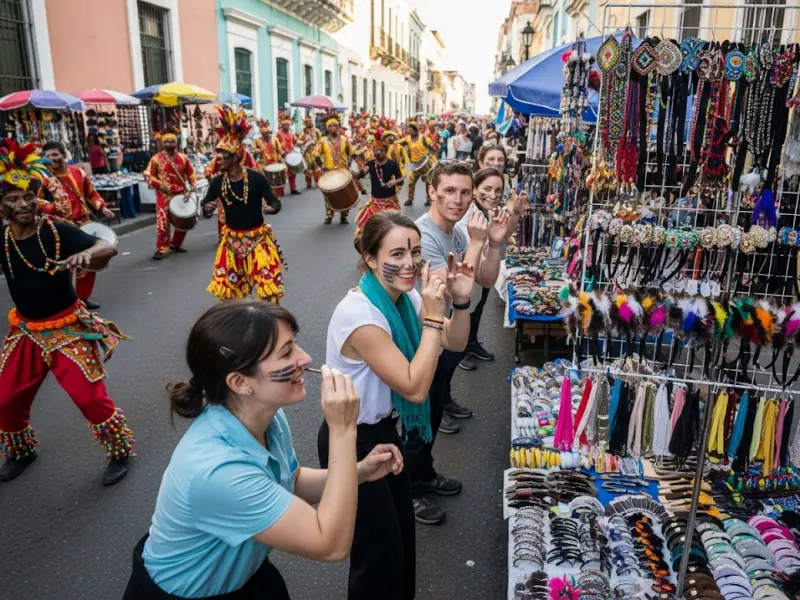
🎭 What to Expect at Ati-Atihan
Ati-Atihan is not the kind of festival you just watch — it’s one you join. The line between performer and spectator disappears. Step into the streets of Kalibo in January, and you’re instantly swept into the rhythm, the colors, and the devotion.
🥁 The Drums and Dancing
The heartbeat of Ati-Atihan is the drumbeat. From sunrise until long past sunset, groups called tribus roam the streets, their drummers pounding hypnotic rhythms that shake the ground beneath your feet. The moment the drums start, people chant “Viva! Santo Niño!” and dance in a forward-and-backward step — a nod to the original sulog rhythm.
It’s impossible to just stand still. I remember my first Ati-Atihan — a stranger grabbed my hand, pulled me into their circle, and suddenly I was moving with the crowd, sweat dripping but smiling ear to ear. That’s the magic here: nobody is an outsider.
🖌 Painted Faces & Tribal Vibes
Ati-Atihan is a living canvas. Festival-goers smear their faces with black soot or paint them with bold tribal patterns in reds, yellows, and blues. Costumes range from simple black tunics (to mimic the Ati) to flamboyant feathered headdresses, neon fabrics, and body paint.
The vibe is primal, almost otherworldly — you feel like you’re part of something ancient and alive. It’s less about looking polished and more about letting loose and celebrating your place in the tribe.
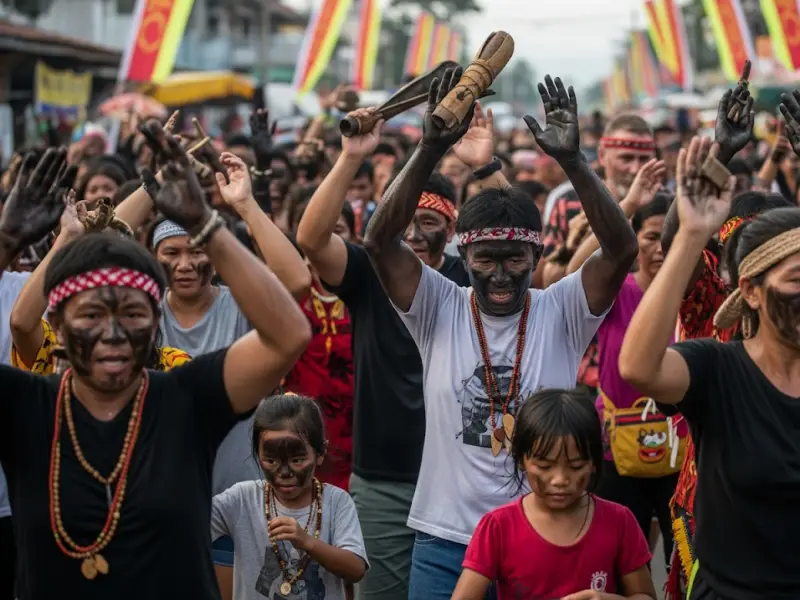
✨ Religious Activities
While it feels like one massive street party, Ati-Atihan is also deeply spiritual.
-
Novena Masses at Kalibo Cathedral – attended by thousands leading up to the final day.
-
Procession of the Santo Niño – where devotees carry Santo Niño images dressed in crowns, robes, even tiny sunglasses.
-
Pilgrimages – families proudly walk through the streets holding their Santo Niño high, blending worship with celebration.
It’s this mix of the sacred and the festive that makes Ati-Atihan unlike any other fiesta.
🎉 Street Parties
When night falls, Kalibo keeps buzzing. Streets turn into open-air food parks with lechon, barbecue, beer tents, and local snacks. Live bands and drum circles keep the energy alive, but compared to Sinulog’s EDM-heavy street raves, Ati-Atihan’s parties feel more laid-back and tribal. Think less glow paint, more acoustic jams and dancing around the drumbeats.
Here’s the thing: you’ll leave the streets with tired feet, a full stomach, paint on your face, and a memory you’ll never forget. Ati-Atihan is messy, spiritual, and wild — but it’s also welcoming in a way that makes you feel like you truly belong.
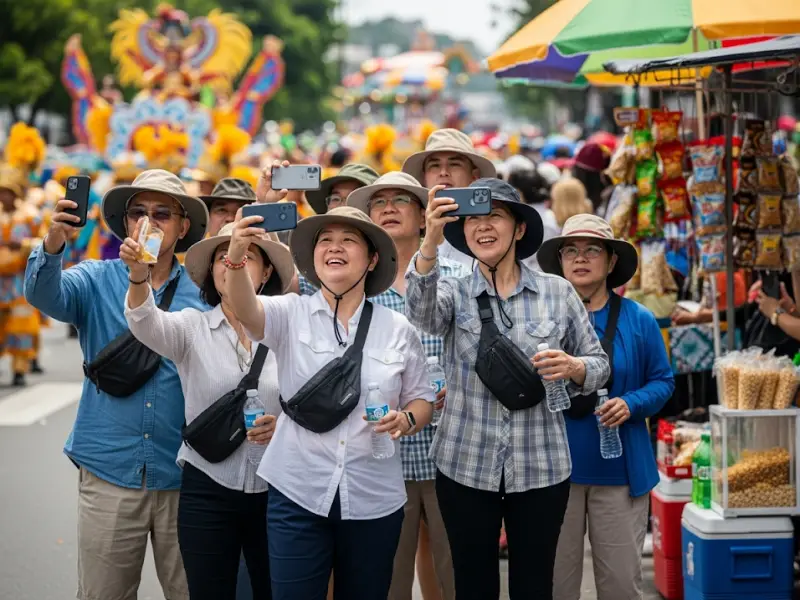
🛠 Survival Tips for First-Timers
👟 Wear the Right Outfit
-
Comfortable shoes — you’ll be dancing and walking all day.
-
Clothes you don’t mind getting dirty — soot, paint, and beer showers are common.
-
A hat or bandana to protect against the sun.
🎒 Essentials to Bring
-
Small waterproof bag.
-
Power bank.
-
Refillable water bottle.
-
Wet wipes or alcohol for quick clean-ups.
💰 Money Matters
-
Bring small bills (₱20s, ₱50s, ₱100s).
-
ATMs can run out of cash — withdraw early.
🕶 Safety First
-
Pickpockets are rare but possible in crowds.
-
Stay hydrated — January sun in Aklan can be intense.
-
Stick with your group, especially at night street parties.
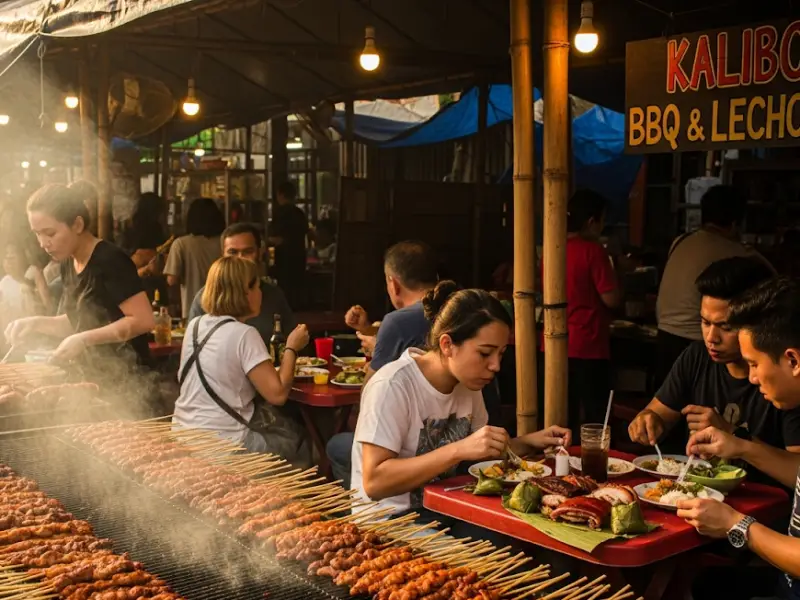
🍴 Where to Eat
Ati-Atihan isn’t just a feast for the eyes and ears — it’s a feast for the stomach too. Kalibo during festival week becomes one giant food court, with stalls and carinderias spilling onto the streets. Whether you’re craving smoky street food or a sit-down bowl of something hearty, there’s always a plate (or skewer) waiting for you.
🌟 Must-Try Foods in Kalibo
-
Lechon Manok (Aklan style) – Spiced roasted chicken, marinated with local herbs before being cooked over charcoal. Juicier and more aromatic than your usual fast-food roast.
-
Binakol – Chicken soup simmered in coconut water with lemongrass and vegetables. The sweet, fragrant broth hits differently after a long day of dancing.
-
Batchoy – Noodle soup with pork, liver, and chicharon. Originally from Iloilo, but just as comforting here — especially at night when the streets cool down.
-
Inubarang Manok – A true Aklanon specialty you won’t find everywhere. It’s native chicken stewed with ubad (banana pith), giving it a unique earthy flavor. Locals will tell you this is their pride dish.
🎉 Festival Food Stalls
During Ati-Atihan, Kalibo’s streets turn into a rolling buffet.
-
Barbecue everywhere – Pork, chicken, isaw (intestines), hotdogs on sticks. Grab some with puso (hanging rice) for the ultimate festival combo.
-
Grilled seafood – Kalibo is close to the sea, so you’ll find bangus, squid, and shellfish fresh off the grill.
-
Snacks and sweets – From banana cue and turon to bibingka and kakanin, perfect for merienda in between the dancing.
💡 Pro Tips
-
Eat in between parades. Food lines get crazy during peak hours, so grab a meal early or late.
-
Try local eateries. Don’t just stick to festival stalls — carinderias in town serve authentic Aklanon dishes at half the price.
-
Hydrate smart. Coconut juice and sago’t gulaman are everywhere and way more refreshing than soda under the festival sun.
🛏 Where to Stay
Unlike Cebu or Iloilo, Kalibo is a small town, which means accommodations are limited — and they get snapped up quickly during Ati-Atihan. If you’re serious about joining the festival, book as early as possible (some locals even reserve a year in advance).
💸 Budget Inns & Homestays (₱800–₱1,200/night)
-
These are the closest you’ll get to the action, often within walking distance of the plaza where parades and processions happen.
-
Expect simple fan or aircon rooms, basic amenities, and family-run vibes.
-
Perfect for backpackers and those who just need a bed after hours of dancing in the streets.
🏨 Mid-Range Hotels (₱2,000–₱3,000/night)
-
These fill up quickly, especially with balikbayans who plan trips around Ati-Atihan.
-
You’ll get air-conditioning, Wi-Fi, breakfast, and sometimes shuttle services.
-
Best for families or couples who want comfort but still want to be near the action.
🏝️ Alternative Option: Stay in Boracay
-
Some travelers base themselves in Boracay (about 2 hours away) and take a side trip to Kalibo for the festival’s climax.
-
This works if you want the best of both worlds: Ati-Atihan’s raw street energy plus Boracay’s beaches and nightlife.
-
Downside: You’ll miss the early morning processions and late-night drum circles unless you stay in Kalibo itself.
💡 Pro Tips
-
Book early — really early. By December, most hotels are fully booked.
-
Consider homestays or Airbnb. Locals often open spare rooms during festival week.
-
Stay central if possible. Being within walking distance saves you from road closures and traffic jams.

🚗 How to Get There
Kalibo may be a small town, but during Ati-Atihan it becomes one of the busiest destinations in the country. Thankfully, it’s well-connected by air and land.
✈️ By Air
-
Kalibo International Airport (KLO) is just about 10–15 minutes from the town center, making it the easiest gateway.
-
There are direct flights from Manila, Cebu, and Clark, plus international connections from South Korea, China, Singapore, and Hong Kong.
-
During festival week, flights sell out fast — and ticket prices surge — so book months in advance.
🚌 From Boracay (Caticlan)
-
If you’re staying in Boracay, you can take a van or bus from Caticlan to Kalibo. Travel time is around 2 hours, depending on traffic.
-
Many travelers combine both trips: beach days in Boracay, then a quick hop to Kalibo for the fiesta weekend.
🛣️ From Iloilo
-
A longer but scenic option: take a 4–5 hour bus ride from Iloilo to Kalibo. Buses and vans are available at Iloilo’s Ceres terminal.
-
Good choice if you’re doing a Western Visayas festival loop (Dinagyang in Iloilo + Ati-Atihan in Aklan).
💡 Pro Tips
-
Arrive early. Kalibo gets crowded quickly, and flights/buses can get delayed with the surge of visitors.
-
Book return tickets in advance. Don’t expect to just show up at the terminal after the festival and get a seat.
-
Be ready for traffic. Roads in and out of Kalibo slow to a crawl during parade day, so plan extra time.
The first time I went, I landed at Kalibo airport on a Friday afternoon, thinking I could just stroll into town. Big mistake — the streets were already buzzing, and the van ride that usually takes 15 minutes stretched to almost an hour. Lesson learned: arrive early in the week if you want to beat the chaos.
💸 Sample Budget for Ati-Atihan
| Category | Cost Range (₱) |
|---|---|
| Accommodation (per night) | ₱1,000 – ₱3,000 |
| Food (per day) | ₱300 – ₱700 |
| Transport (local) | ₱50 – ₱200 |
| Festival Extras (souvenirs, drinks, paint) | ₱200 – ₱800 |
| Estimated Daily Total | ₱1,500 – ₱4,500 |
📱 Useful Apps & Travel Tips
-
Google Maps – Kalibo is small, but it helps find food spots.
-
Grab/Taxi apps: Not available in Kalibo — rely on tricycles.
-
Messenger/WhatsApp: For group coordination (cell signal can get weak during peak festival days).
-
Cash over cards: Many small stalls don’t accept cards.
📚 Frequently Asked Questions
Is Ati-Atihan safe for tourists?
Yes, locals are very welcoming. Just be mindful of your belongings in crowded areas.
What’s the difference between Ati-Atihan and Sinulog?
Ati-Atihan is more raw and tribal; Sinulog is larger, more commercialized, with international tourists.
Do I need tickets for the parade?
No — streets are open. Everyone is welcome to join in the dancing.
Can kids join the festival?
Yes. Families bring children, especially for daytime religious processions.
What should I shout during the festival?
“Viva! Santo Niño!” — the rallying cry of Ati-Atihan.
When should I book hotels and flights?
At least 3–6 months ahead, as Kalibo gets full quickly.
Is it religious or just cultural?
Both. It started as indigenous, became Catholic, and now blends culture, devotion, and fun.
How do I join in the dancing?
Easy — just jump in with the drum groups. Everyone is welcome!
❤️ Experiencing Ati-Atihan Like a Local
Ati-Atihan is different from any other festival. It’s not just something you watch — it’s something you join. Locals will pull you into the dance, hand you a drumstick, or even smear soot on your face so you truly feel part of the celebration.
The first time I joined Ati-Atihan, I didn’t know what to expect. By the end of the day, I was dancing barefoot with strangers-turned-friends, eating barbecue on the street, and chanting “Viva! Santo Niño!” until my voice went hoarse.
That’s the spirit of Ati-Atihan — participation, community, and joy. It’s not polished, not overly commercial, but raw and alive. And if you’re looking for a festival that captures the heart of Filipino devotion and hospitality, this is it.
So pack your energy, your sense of adventure, and maybe an old shirt you don’t mind getting dirty — because Ati-Atihan will leave you messy, happy, and full of memories.



